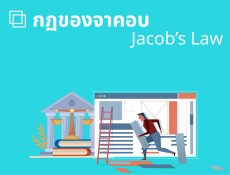
Psychology in website design
2023-11-13 10:23:08
Psychology in website design
The psychology of web design is a very interesting and important topic. Good website design is not only about beauty and modernity. But still need to consider the convenience of use reliability and user satisfaction as well Understanding user psychology helps web designers create a positive experience that suits the website's goals.
This article will introduce psychological principles and techniques that can be applied to website design. The content is as follows:
- Using colors and shapes to create moods and feelings.
- Using Gestalt principles to organize and group information.
- Using Fitts' Law and Hick's Law principles in designing buttons and menus.
- Using the principles of Jakob's Law and Nielsen's Heuristics to create reliability and ease of use.
- Using Scarcity and Social Proof principles to create demand and trust

I am using colors and shapes to create moods and feelings.
Colors and shapes are an important part of website design that can affect the mood and feelings of users. Choosing colors and shapes that are appropriate for your website's content and goals will help users perceive and respond better to your website.
For example, red is often used to create heat, urgency, or risk. Green is often used to create freshness. naturalness or friendliness Blue is often used to create coolness, calmness, or trustworthiness. Yellow is often used to create fun, cheerfulness or to stand out.
The shape also affects the user's feelings. Shapes with sharp angles are often used to create strength, excellence, or challenge. Shapes with rounded corners are often used to create softness, gentleness, or balance.
Website designers should study and test colors and shapes that are appropriate for the website's target audience. and use colors and shapes with reason and meaning Colors and shapes should not be used randomly in the first place. or use colors and shapes that conflict or are ambiguous with the content or goals of the website.
Gestalt principles for arranging and grouping information
It is a principle that explains that the human brain tends to look at the overall picture of things. Before looking at the details There are many types of Gestalt principles, but in this article, we will focus on four important ones:
- Proximity: The human brain views objects that are close together as the same group. and are related, therefore, placing related information close to each other will help users understand the relationship of information more easily. For example, on Skilldee's website, information about online courses in the same category. will be placed close to each other Makes it easier for users to choose courses that interest them.
- Similarity: The human brain views objects that are similar in color, shape, size, or arrangement. are the same group, so using similarity to display information that is the same will make it easier for users to classify and match information. For example, on MagGang's website, information about articles in the same category. will be displayed in the same color. This allows users to know which articles belong to which category.
- Closure: The human brain views objects as incomplete or unclear. It is a complete and clear object. Using familiarity or expectation to fill in the missing pieces, thus using concealment to display unnecessary information. It will help users to understand information faster. and simplify the design. For example, on the website Medium, information about the author of the article will be partially concealed and displayed only when the user hovers over the author's image. This allows users to see important information first. and choose to view additional information as needed
- Continuity (Continuity): The human brain views objects that are arranged or connected. They are objects that have relationships. There is continuity, so using succession to display information that has a sequence or steps makes it easier for users to follow and understand information, for example, on a UI website. Blogazine information about articles that have a sequence or steps. They are represented by numbers or symbols that are connected. This allows the user to perceive the relationship and continuity of the data.
Principles of Jakob's Law and Nielsen's Heuristics
It is a principle that helps website designers create trustworthiness and ease of use for users. with the following meanings
- Jakob's Law is a principle that explains that users tend to expect the functionality of a website based on their experience of using other websites. Therefore, website designers should follow standards or guidelines that are perceived by users. Unusual or confusing language, symbols, or designs should not be used. For example, on Lazada's website, users can see a shopping cart icon. and a heart icon showing the number of products selected or liked. This is a design that is consistent with other websites that offer online trading functionality.
- Nielsen's Heuristics is a principle that describes user satisfaction and ease of use when a website is designed to suit the user's needs and abilities. Therefore, website designers should follow these 10 principles:
- Visibility of System Status
- Match Between System and the Real World
- User Control and Freedom
- Consistency and Standards
- Error Prevention
- Recognition Rather Than Recall
- Flexibility and Efficiency of Use
- Aesthetic and Minimalist Design
- Help Users Recognize, Diagnose, and Recover from Errors
- Help and Documentation
Using Scarcity and Social Proof Principles to Create Demand and Trust It is a useful principle for web designers. with the following meanings
- Scarcity is a principle that describes users' tendency to respond to a limited number of objects. or is rare to increase the demand Or the feeling that you don't want to miss out on an opportunity? Therefore, website designers should use Scarcity to create enthusiasm among users. This may use various methods such as displaying the amount of products remaining. countdown time Giving discounts or special offers or showing the popularity of a product. For example, on the Booking.com website, Scarcity is displayed by saying there are only a few rooms available. Or many people are viewing the same room. Makes users feel like they have to hurry and reserve a room before it's all gone.
- Social Proof is a principle that explains that users tend to trust the opinions of others in society. And let that opinion affect behavior and decision-making. Therefore, website designers should use Social Proof to build trust with users. This may use various methods such as showing certification. Display of media uses popularity display expressing opinions expression of preference Or showing expertise. For example, on the Lazada website, Social Proof is displayed by telling which products are selling well. There are ratings and reviews from buyers. or have recommendations from experts Makes users feel that the product is of high quality and trustworthy.
Leave a comment :
Recent post

2025-01-10 10:12:01

2024-05-31 03:06:49

2024-05-28 03:09:25
Tagscloud
Other interesting articles
There are many other interesting articles, try selecting them from below.

2025-05-09 03:40:39

2023-11-01 02:54:29

2024-12-03 05:29:27

2023-11-09 09:55:03

2024-10-28 04:22:55

2025-03-07 10:26:00

2024-02-20 04:25:16


